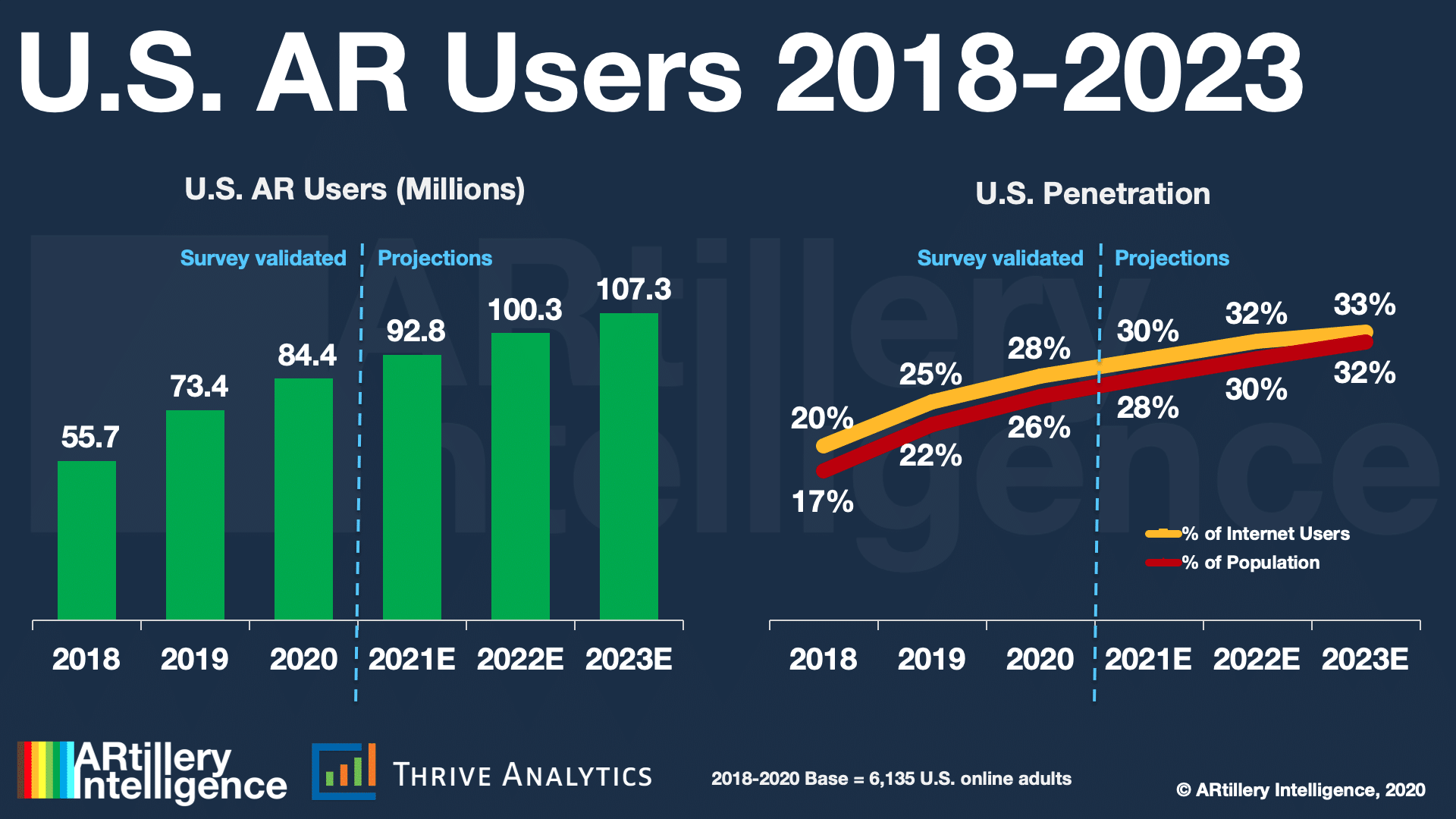
![]() “Behind the Numbers” is AR Insider’s series that examines strategic takeaways from the original data of its research arm, ARtillery Intelligence. Each post drills down on one topic or chart. Subscribe or login to access the full library of data and reports.
“Behind the Numbers” is AR Insider’s series that examines strategic takeaways from the original data of its research arm, ARtillery Intelligence. Each post drills down on one topic or chart. Subscribe or login to access the full library of data and reports.
Industry rhetoric about AR’s world-changing status sometimes outweighs evidence that it’s captivating consumers today. Though we see some signals, such as lens engagement figures from Snapchat and others, we’re often “flying blind” when it comes to consumer AR sentiment.
Looking to fill that gap, AR Insider’s research arm ARtillery Intelligence has completed Wave III of its annual consumer survey report. Working with consumer survey specialist Thrive Analytics, it wrote questions to be fielded to 1000+ U.S. adults and produced a report based on the results.
Known as AR Usage & Consumer Attitudes, Wave III, it follows similar reports over the last few years. Three waves of research now bring new insights and trend data to light. And all three waves represent a collective base of 6,135 U.S. adults for robust longitudinal analysis.
Among the topics: How is mobile AR resonating with everyday consumers? How often are they using it? How satisfied are they? What types of experiences do they like most? How much are they willing to pay for it? And for those who aren’t interested in mobile AR… why not?

Captivating Consumers
Picking up where we left off in examining consumer AR sentiments, how satisfied are they with the experiences they’ve tried? 68 percent report either high (27 percent) or very-high (41 percent) satisfaction levels. 23 percent remain neutral and nine percent report low or very-low satisfaction.
The good news is that there are few consumer products that show such high satisfaction. As a point of comparison, satisfaction levels in our corresponding VR survey are favorable, but lower than these reported AR sentiments with 55 percent reporting high or very high satisfaction.
Overall, this tells us a few things. For one, AR’s highly-visual and immersive format is already proving to captivate consumers. This is largely due to its revolutionary – rather than evolutionary – interface when compared with non-immersive mobile app experiences that have become routine.
It also counters observations that some have made about the subpar and underwhelming state of mobile AR experiences so far. We stand by the assertion that apps will evolve a great deal – just as early iOS apps did – but it’s notable that high satisfaction is already present today.
And that satisfaction is validated by its consistency. With a large collective sample across three waves of research over three years, higher than expected satisfaction levels can’t be chalked up to anomaly. Future waves will provide additional validation and longitudinal analysis.

Satisfaction + Frequency
Going one level deeper, how does mobile AR satisfaction map to usage frequency. The question – as we’ve asked in similar exercises recently – boils down to how survey respondents at various usage frequencies separately answered the question of how satisfied they are with AR?
The high-level takeaway is that the greatest satisfaction was reported for daily users (see above), while moderate satisfaction was highest for monthly users. This isn’t surprising, as frequency should map to satisfaction. But a few nuances emerge once we start to dig deeper.
For example, among “satisfied” users (follow the green bars in the chart above), monthly use (46%) exceeds daily and weekly use (40%). However, “very satisfied” users have the inverse relationship, with much stronger daily and weekly use (38%) than monthly use (18%).
One way to read this is that boosting satisfaction can have a correlative impact on usage frequency. That should be an obvious goal of any product, but the strategic takeaway is that there can be an outsized payoff in usage frequency which directly impacts monetization potential.
The key question is ‘how?’ Boosting satisfaction involves UX tactics that continue to develop. They include lessons we’ve examined from AR leaders like Snap, Niantic and Houzz, such as social components (e.g. messaging), frictionless activation, real utility and gamification.
We’ll be back with more report excerpts and tidbits. Meanwhile, check out the full report here.
